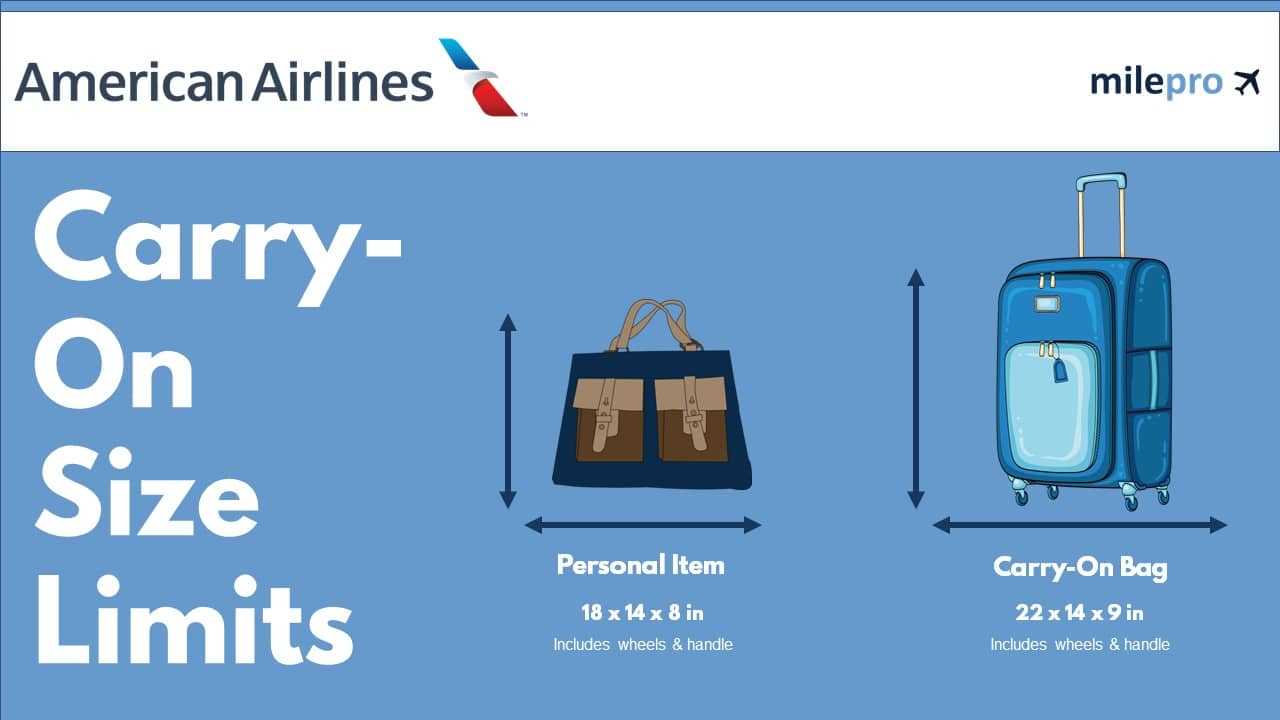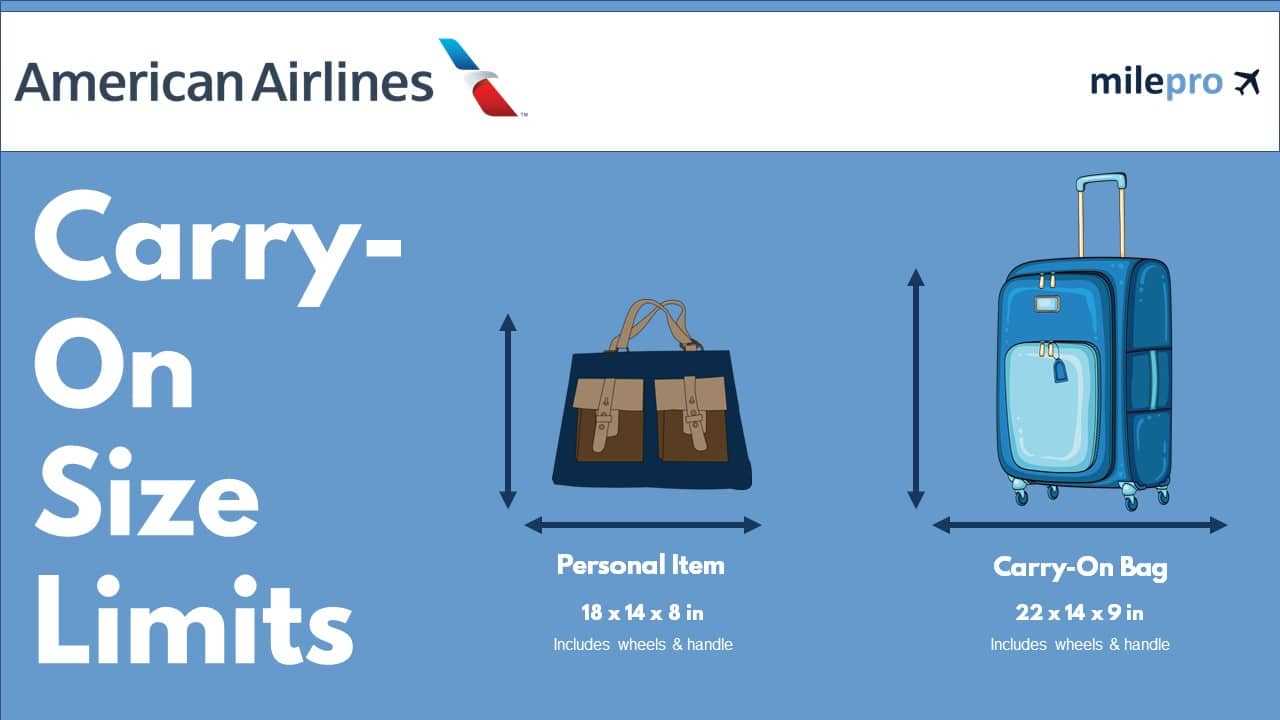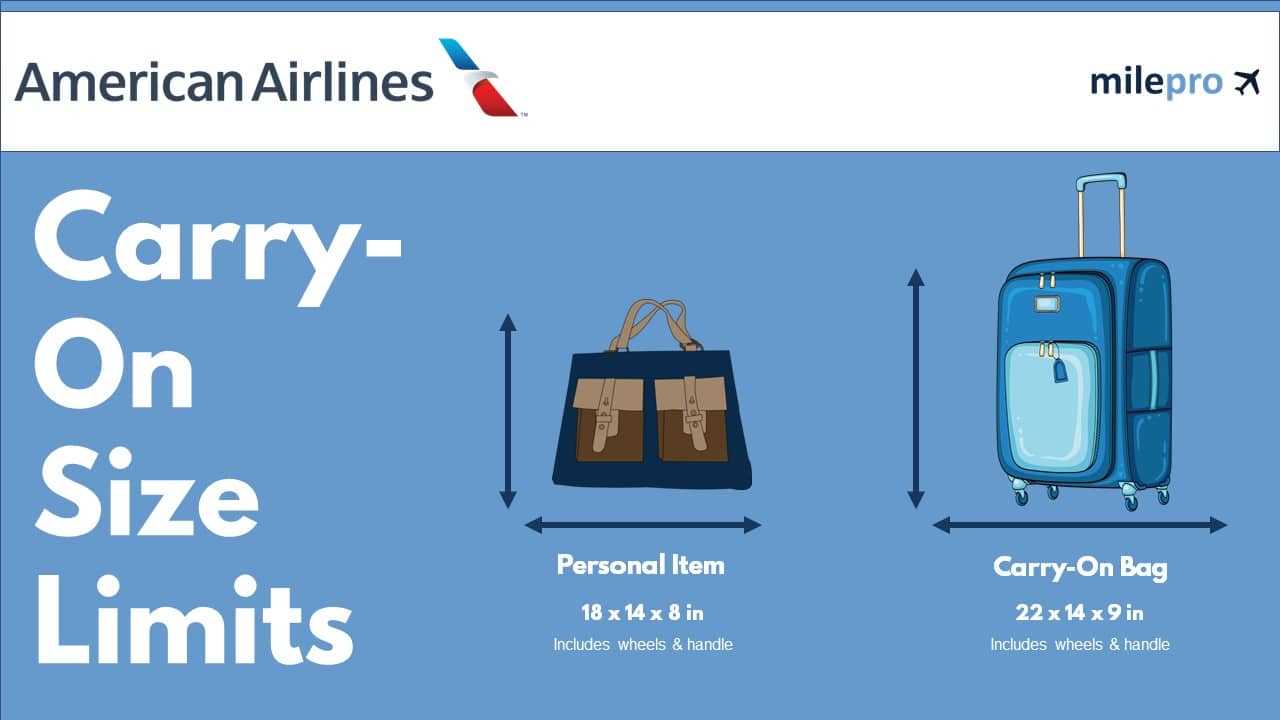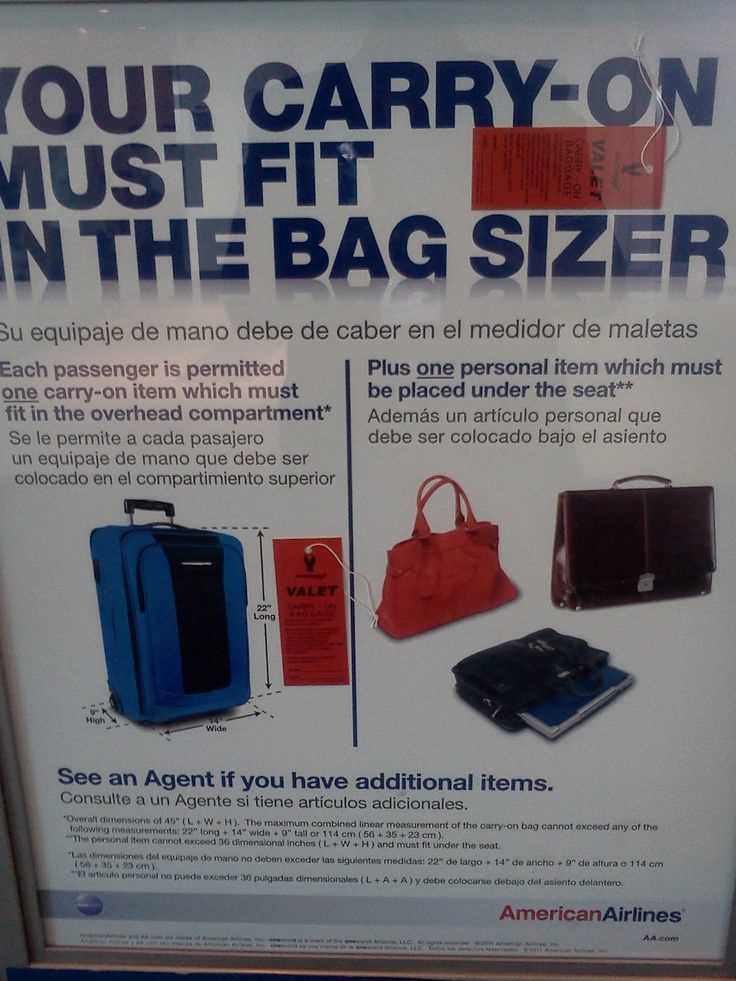



Maximum dimensions for the under‑seat allowance are 18 x 14 x 8 inches (45 x 35 x 20 cm); standard overhead carry‑on limits are 22 x 14 x 9 inches (56 x 35 x 23 cm). Most slim daypacks and soft-sided rucksacks that measure within the under‑seat figure are allowed free of charge in main cabin fares; Basic Economy customers may only bring the under‑seat piece and are not permitted a full-size carry‑on in the cabin.
Practical checklist: measure your bag while empty, confirm it slides fully beneath an average seat, keep laptops in a slim sleeve for quick access, and stow liquids and chargers in exterior pockets. If the pack exceeds the under‑seat limit you should be ready to either gate‑check it or pay for a carry‑on/checked bag; first checked bag fees on many domestic routes are typically about $30 USD.
Gate agents apply size rules at boarding; if you want to avoid surprises, weigh and measure before travel, purchase carry‑on priority or early boarding when available, or swap to a narrower soft-sided carrier that compresses under the seat. When packed to the under‑seat dimensions, a rucksack will travel in-cabin without an extra charge on this U.S. operator.
Does a small rucksack qualify as an under-seat carry for AA?

Yes. A compact rucksack that fits under the seat and measures no more than 18 x 14 x 8 inches (45 x 35 x 20 cm) is accepted as your under-seat allowance on AA; anything larger must go in the overhead bin (standard carry-on limit 22 x 14 x 9 inches / 56 x 36 x 23 cm) or be checked.
Packing and boarding recommendations

Measure your bag before travel and use a soft-sided model to squeeze beneath the seat. Place laptops in a separate sleeve for quick removal at security, keep liquids in 3-1-1 compliant clear bags, and store heavier objects low and close to the seat-facing side so the bag compresses easily.
Fare-class and routing exceptions
On Basic Economy fares with AA only the under-seat allowance is permitted; overhead carry-on is restricted. Some international routes or partner carriers impose weight or different size limits–verify the allowance on your specific booking or the carrier’s route rules to avoid gate charges. If in doubt, measure with packed contents and be prepared to gate-check if the gate agent requests.
Under-seat size limits and how to measure your daypack
Size limits and quick rule
Keep the small under-seat bag at or below 18 × 14 × 8 in (45 × 35 × 20 cm) so it fits beneath the passenger seat; if it exceeds that, aim for the carry-on maximum of 22 × 14 × 9 in (56 × 36 × 23 cm) to use the overhead bin. There is no published weight cap for the under-seat allowance, but gate agents can require stowage in the hold if the bag won’t fit.
How to measure a daypack correctly
1. Use a flexible tape measure. Place the bag on a flat surface and measure the height from the base to the highest point, including any rolled or extended top closures.
2. Measure width across the frontmost pockets at the widest point (include side pockets if permanently attached).
3. Measure depth from the front-most point (including bump-out pockets) to the back panel; include thick straps, bumpers or external frames in this depth figure.
4. If the bag has wheels or a retractable handle, add the projection of the wheels and the retracted handle to depth and height measurements respectively.
5. Record measurements with zippers fully closed and material uncompressed; carriers generally check fully expanded dimensions. If your pack is soft-sided, try compressing and tucking straps–measure again to confirm it will fit under the seat.
Practical checks: leave a 0.5–1 in (1–2.5 cm) margin under the published limits, test-fit in an overhead sizer or the under-seat space at the gate, and remove or reposition bulky items (water bottles, tripods, shoe inserts) before boarding if space is tight.
How fare type (Basic Economy vs Main Cabin) affects rucksack allowance
If you need overhead-bin space, purchase a Main Cabin fare or add a carry-on allowance at booking; Basic Economy limits you to a single under‑seat small bag unless you hold elite status or a qualifying add‑on.
| Fare | Under‑seat small bag | Overhead‑bin cabin bag | Common exceptions | Actionable recommendation |
|---|---|---|---|---|
| Basic Economy | Permitted: one compact bag that must fit beneath the seat in front of you. | Not included: larger cabin bags for overhead bins are not allowed on this fare in most markets. | Elite status holders (carrier loyalty tiers), certain oneworld elites, military personnel on orders, or passengers who purchase a carry‑on upgrade or upgrade fare. | Upgrade at booking or before check‑in if you need an overhead bag; pack essentials and electronics in the under‑seat unit; be prepared to gate‑check any oversized bag and expect possible delays retrieving it. |
| Main Cabin | Permitted: one compact under‑seat bag. | Permitted: one standard cabin bag allowed in the overhead bin at no extra charge. | Standard across fare holders; families and connecting passengers still must meet size rules. | Bring both a small under‑seat unit and a standard cabin bag for bulkier items. Confirm dimensions at purchase and board early to secure overhead space. |
Practical tips: measure your daypack and standard cabin unit before travel; place fragile electronics and travel documents in the under‑seat pocket; if flying Basic Economy and you anticipate needing overhead space, buy the Main Cabin fare or add a carry‑on allowance during booking to avoid last‑minute gate charges or forced checking.
How to position a daypack under the seat to pass gate checks
Slide the pack nose-first with its flattest face forward so the profile is under 8 inches high and no wider than 17–18 inches; this orientation maximizes depth use and reduces the chance gate staff will ask for a gate check.
Empty or compress water bottles and bulky toiletry cases; remove hard-shelled items (camera cases, large chargers) and stow them in a smaller bag you can keep at your feet rather than letting them create a rigid bump.
Place electronics and thinner items (laptop, tablet, documents) in the internal sleeve against the back panel so the front-facing side stays as flat as possible; heavier items should sit low and toward the front edge to prevent tipping when sliding under the seat.
Tuck shoulder straps and sternum clips inside the main compartment or wrap them around the pack and secure with a rubber band or Velcro strap to avoid snagging and to shrink external bulk.
Use a thin packing cube or compression sack for clothing; compressible fabrics reduce height more reliably than folding, allowing the pack to sit flush under the seat.
Turn external side pockets inward and zip all compartments; protruding zippers, bottles or trip-gear are common reasons gate staff declare a bag too large.
Avoid boarding into a bulkhead row if keeping the carry on at your feet is required–bulkheads typically have no under-seat space. If asked at the gate, show the pack partially inserted to demonstrate it fits within the plane’s under-seat opening; be ready to remove valuables if staff still require a gate check.
Measure your pack before travel (height, width, depth) and compare with typical under-seat allowances: aim for ≤8″ H × 17–18″ W × 16–18″ D to reduce gate-check risk across most domestic carriers.
When a daypack is treated as a carry-on and may incur fees

If your rucksack exceeds 22 x 14 x 9 in (56 x 36 x 23 cm) or cannot be stowed beneath the seat in front of you (rough guideline for under‑seat space: ~18 x 14 x 8 in / 45 x 35 x 20 cm), expect it to be handled as an overhead cabin bag and possibly subject to charges.
Specific triggers that push a small bag into the overhead/fee category

– Over‑sized dimensions (including external pockets and protruding straps). Measure fully packed shape, not empty shell.
– Excess bulk caused by insulated liners, winter coats, large laptop with sleeve, or full toiletry kits.
– Fare restriction: lowest fare classes on many U.S. carriers only permit an under‑seat carry; any overhead piece must be checked or assessed a fee.
– Full overhead bins at busy flights – agents may gate‑check or require paid checked baggage.
– Weight/handling issues: even without a published weight limit, gate agents can refuse if a piece cannot be safely lifted into the bin.
Practical steps to avoid fees
– Measure packed dimensions before travel (include straps). Aim for ≤18 x 14 x 8 in to be safe for under‑seat allowance.
– Transfer bulky items (jacket, large shoes, heavy books) to wear or to your main checked luggage.
– Use a slim laptop sleeve and compressible packing cubes to reduce profile.
– At check‑in, present the small carry beneath the measurement frame rather than at gate; if you must gate‑check, ask whether it will be free or counted as a checked bag (first checked bag on many U.S. routes typically ~$30, second ~$40).
– If carrying liquids or cleaning gear in the small pack, pack compliant sizes and place them in an easy‑accessible pouch to avoid delays. For bulky maintenance or cleaning tools consult product guides such as best pressure washer for hand car wash.
Features and styles that most often qualify as under-seat carry
Choose a slim, soft-sided daypack (10–22 L) with a vertical laptop sleeve, tuck-away straps and no wheels to maximize the chance it fits entirely beneath the seat and avoids gate checks.
- Shape: Rectangular or slightly tapered front-to-back; flat base and low profile are best for sliding under seats. Round or bulky silhouettes increase rejection risk.
- Structure: Soft-sided, compressible fabrics (nylon, Cordura) compress better than molded shells or internal frames; avoid rigid backs or metal frames that keep the load thick.
- Closure: Top-access zippers or clamshell openings that lie flat are preferred over drawcords and roll-tops that add volume.
- Laptop sleeve orientation: A vertical sleeve that aligns the device spine-to-base reduces horizontal width; padded sleeve inside the pack is safer than an external laptop pocket.
- Strap management: Shoulder straps that fold into a rear pocket or detach reduce snagging and overall profile; hidden hip belts are better than exposed ones.
- Absence of wheels/handles: No wheels, telescoping handles or rigid trolley frames – those features typically trigger gate-checks and extra fees.
- External pockets: Flat, zippered front pockets for documents and small items keep the main compartment compact; large insulated water-bottle sleeves that bulge outward are a disadvantage unless compressible.
- Compression: External compression straps or internal compression panels allow volume reduction when not fully packed; useful for meeting under-seat thickness limits.
- Capacity guidance: 10–15 L for strict under-seat use; 16–22 L for travelers who carry a laptop and a few A4 notebooks. Packs >30 L are likely to be treated as full carry-ons.
- Weight: Aim for an empty weight under 2.5 lb (1.1 kg) to keep the loaded bag light and flexible for squeezing under seats.
- Orientation tips: Vertical-loading compartments and slim profiles that place bulk along the seatback-to-front plane are easier to slide underneath than wide, shallow designs.
- Security and accessibility: Concealed zippers and a lockable main compartment add security without increasing external bulk; avoid external hard pockets that protrude.
- Convertible styles that pass: Slim laptop packs, messenger-style crossbody bags with a slim rear panel, compact sling bags and tote-to-pack convertibles with stowable straps are most likely to meet under-seat allowances.
Packing practice: place heavy electronics lowest and centered, compress clothes around them, and test the packed profile by placing the bag flat under a chair or bench before travel. For model suggestions and reviews consult best backpack for medical school.
Steps to take at the gate if your daypack is flagged: packing and checking options
If the gate agent flags your daypack, move laptop, prescription medication, travel documents, portable chargers and valuables into your coat or carry-on pockets immediately and choose one of the options below.
-
Secure essentials you must keep with you
- Electronics: laptops, tablets and cameras go in your lap, coat or a small bag – spare lithium batteries and power banks are never checked, keep them on board.
- Medication and fragile items: place these inside your person or a small soft pouch to guarantee access on arrival.
- IDs, boarding pass and cash: keep in a front pocket or neck wallet.
-
Prepare the flagged pack for gate check
- Empty all external pockets; remove easily lost accessories (carabiners, tags, loose straps).
- Pad fragile contents with clothing or bubble wrap and compress to reduce bulk.
- Photograph the pack (front, back, contents) before handing it over; note any pre-existing damage.
- Attach a business card or tag with your name, phone number and flight number on the exterior.
- Use a TSA‑approved lock only on zippers; do not lock compartments that agents need to inspect.
-
Ask the gate agent these specific questions
- “What is the cost for a gate check today?”
- “Will I get a gate check claim tag and where do I pick up checked carrys at arrival?”
- “Can I carry on only the most important pieces and gate‑check the rest?”
- “Is there a way to avoid a fee with my boarding group, status or travel credit card?”
-
Decide quickly – common paths
- Gate check: hand the prepared pack to the agent, keep the claim stub, and collect photos/receipt if provided.
- Purchase a replacement at the airport if fee + risk outweighs the value of the bag – local shops often carry inexpensive totes and soft duffels (see best luggage stores san francisco for examples).
- Wear or reconfigure: if permitted, shift the load onto a coat or a smaller permitted bag to meet carry rules and reboard with it.
-
After handing the pack over
- Keep the gate check tag and take a photo of it; this is your retrieval receipt.
- Record the agent name and desk number in case of loss or damage claims.
- On arrival, inspect the pack in daylight and photograph any new damage before leaving the airport; file claims within the carrier’s stated timelines if needed.
Quick decision-making, removing restricted items, and documenting condition and receipts are the fastest ways to protect valuables and minimize fees when a gate agent flags your carry-on gear.







